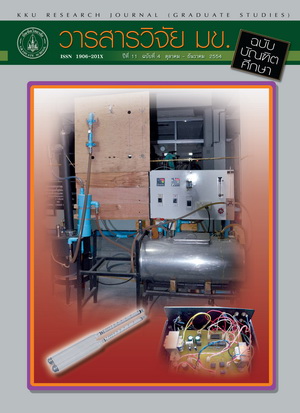Ethyl-p-methoxycinnamate (EPMC) and Dichloromethane Extract From Kaempferia galanga L. Modulated Pentobarbital-induced Sleeping and Hepatic Cytochrome P450 Enzyme Activities in Mice เอทิลพาราเมทอกซิซินนาเมต (อีพีเอมซี) และสารสกัดไดโคลโรมีเทน จากเปราะหอมเป
Keywords:
Ethyl-p-methoxycinnamate, Kaempferia galanga, Pentobarbital-induced sleeping, Cytochrome P450, Herbal-drug interactionAbstract
Kaempferia galanga L. or Proh Hom is commonly used as an ingredient in combination with other
plants in Thai traditional medicines for treatment of hypertension, abdominal pain, headache, toothache,
rheumatics, dyspepsia and cough. The aim of this study used to investigate the effect of the major constituent
ethyl-p- methoxycinnamate (EPMC), and dichloromethane extract of K. galangal L. on pentobarbital-induced
sleeping and hepatic cytochrome P450 enzyme (CYP) activities in mice. After oral administration of EPMC
or dichloromethane extract for 7 and 28 days, the pentobarbital-induced sleeping and hepatic microsomal
CYP2B and CYP3A4 activities were determined. EPMC decreased the duration of pentobarbital-induced
sleeping at both 7 and 28 days of experiments with the induction of CYP2B activity. In contrast,
dichloromethane extract induced CYP2B activity but did not change the pentobarbital-induced sleeping time.
The results suggest the promising potential of K. galanga L. on herbal-herbal or herbal-drug interactions,
which may affect the efficacy and safety of herbs or drugs when using in combination with K. galanga L.



